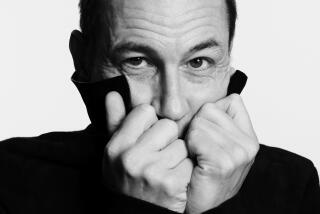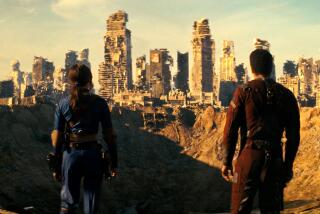Filmmaker blends vintage photos with green screen to make drama
Filmmaker Salvador Litvak knew he had a good story about the relationship between Abraham Lincoln and his longtime bodyguard Ward Hill Lamon.
What Litvak didnât know was how to bring the story, which he wrote with his wife, Nina, to the big screen. As an independent filmmaker, he had to produce a period drama with a budget of less than $1 million, a trickle compared to the $65 million it took to make the Oscar-nominated âLincoln,â directed by Steven Spielberg and starring Daniel Day-Lewis.
So Litvak came up with a novel approach: He would use hundreds of Civil War-era photographs to create digital backgrounds that would allow the movie to be filmed entirely on a soundstage in downtown Los Angeles â without having to spend money traveling to film locations and building costly sets.
PHOTOS: Hollywood Backlot moments
The blending of vintage photographs with state-of-the-art green-screen technology, in a process known as cinecollage, allowed âSaving Lincolnâ to be made at a fraction of the cost of a conventional period drama.
Although âSaving Lincolnâ may not get much attention in the shadow of the critically acclaimed âLincoln,â it is making history in its own way. Other films, such as last yearâs HBO movie âHemingway & Gellhorn,â have used a similar process of marrying digital effects with historical footage, but âSaving Lincolnâ is believed to be one of the first movies to use the process so extensively.
All but one of the 730 shots in the film involved creating digital composites from hundreds of historic photographs that Litvak downloaded for free from a website operated by the Library of Congress.
âThis hasnât been done before for a whole film,â said Litvak, a UCLA film school graduate who also directed the Passover comedy âWhen Do We Eat?â âAudiences have never seen anything like this.â
Litvak spent about a year assembling the photos, initially as part of his research for the movie, which debuted last week at the Alex Theatre in Glendale.
He collected more than 1,000 photos, including pictures of an unfinished Washington Monument, an unfinished dome on the U.S. Capitol, battlefield scenes from Gettysburg and pictures of the streets of Washington as they looked in the 1860s.
âI would spend hours and hours looking at these prints,â Litvak said. âIâd be poking around deep inside these pictures with the cursor from my computer and I suddenly realized â I could move the camera around these photographs instead of the cursor. That was the âahaâ moment.â
âSaving Lincoln,â which stars Tom Amandes as Lincoln, Penelope Ann Miller as Mary Todd Lincoln and Lea Coco as Ward Hill Lamon, was shot over four weeks in August 2011 on a large soundstage at Atomic Studios in downtown L.A.
Actors worked with just a few historical props in front of a giant 140-foot-wide green screen that would later be filled with the digital composites of the original historic photographs.
The historic photos were fed into a computer program that enabled the cinematographer to match the camera angles and perspective used by the original photographer. Visual effects compositors later would add depth and dimension to the flat images.
To help keep costs down, producers partly relied on volunteer students from the Academy of Art University in San Francisco to assist in the visual effects work.
âThe students were instrumental in helping us create this,â said Reuben Lim, a producer on the film. âWe couldnât have done it without them.â
Litvak and his team used social media to spread the word about the film, launching a Facebook page that has more than 50,000 friends. They also relied on the crowd-funding website Kickstarter to raise $62,000 to offset marketing and distribution costs.
North Hollywood prop house History for Hire also gave them a break on rates for such props as a doctorâs amputation kit and telegraph equipment used in Spielbergâs âLincoln.â (The telegraph equipment also made an appearance in âAbraham Lincoln: Vampire Hunter.â)
Litvak is already thinking about using the cinecollage process on other historical movies, including one about Californiaâs gold rush.
âIt used to be if you wanted to tell a wonderful story from our nationâs past, you could only do that if somebody was going to give you $100 million,â he said. âNow we can take a great story like this on a very modest budget and we can get it into theaters. There are so many wonderful stories that can be told this way.â
Where the cameras roll: Sample of neighborhoods with permitted TV, film and commercial shoots scheduled this week. Permits are subject to last-minute changes. Sources: FilmL.A. Inc., cities of Beverly Hills, Pasadena and Santa Clarita. Thomas Suh Lauder / Los Angeles Times
MORE
INTERACTIVE: TVs highest paid stars
ON LOCATION: People and places behind whatâs onscreen
PHOTOS: Hollywood back lot moments
More to Read
From the Oscars to the Emmys.
Get the Envelope newsletter for exclusive awards season coverage, behind-the-scenes stories from the Envelope podcast and columnist Glenn Whippâs must-read analysis.
You may occasionally receive promotional content from the Los Angeles Times.











